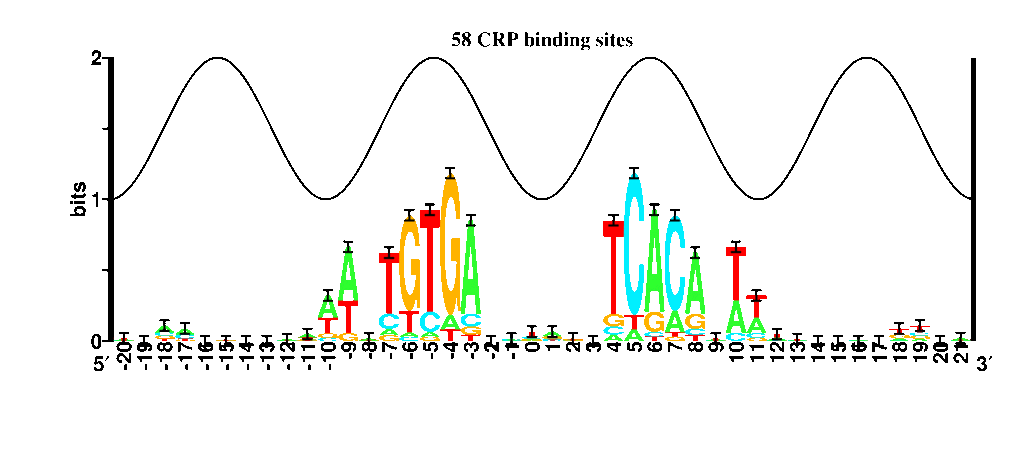

CRP and FNR are DNA binding proteins in E. coli. They have similar structures and they are both activators of transcription (for different sets of genes). Normally they do not bind to each other's sites, but mutation of the proteins has switched their binding sites, and changes to the DNA can allow the other protein to bind. It is therefore not surprising that the sequence logos of the sites are similar. By comparing the two sequence logos, we can gain some insight into the evolutionary divergence of the protein recognition process.
The display was inspired by Pete Lemkin's Flicker program. Mol Biotechnol. 1999 Sep;12(2):159-72. Flicker image comparison of 2-D gel images for putative protein identification using the 2DWG meta-database. Lemkin PF, Thornwall G.
This image was created by combining two gif images using gifmerge. The gifs were created with xv from the PostScript. HOWEVER, I now strongly recommend that you use ImageMagick (http://www.imagemagick.org) instead. It is much more powerful.
Logo Comparison methods:
![]()

Schneider Lab
origin: 1997 February 6
updated: 2018 Mar 14
![]()